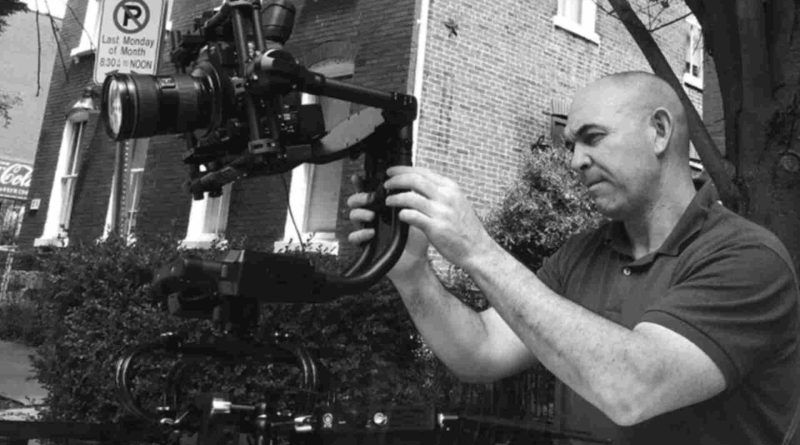Eli Steele: Unveiling Bad Faith
Mid-flight from Los Angeles to Chicago, I found myself seated beside a distinguished elderly gentleman. Inquisitive, he leaned towards me, querying the purpose of my Chicago visit. I disclosed my involvement in documentary filmmaking and my quest to gauge Pastor Corey Brooks’ stance on the nationwide controversies surrounding critical race theory. After a moment of contemplation, he confided that even his tech firm hadn’t escaped unscathed. Then, hesitantly, he uttered, “As a White man…” trailing off, as though no further elucidation was warranted. My retort was swift. Why emphasize ‘White’? I anticipated a semblance of acknowledgment regarding the absurdity of his assertion, yet he regarded me as the absurd one. “Speaking up could jeopardize my job,” he admitted. Our exchange halted thereafter.
However, thoughts of our exchange lingered as I navigated the streets of Woodlawn on Chicago’s South Side in a rented Jeep. Something about him unsettled me—there was an emptiness, a lack of genuineness. It seemed he had forsaken his principles for the sake of facile conformity to external political and racial pressures. He may have retained his livelihood, but at what expense? encounters like this had become all too common in recent years, prompting me to ponder the origin of the decay that reduced individuals to mere skin color.
Arriving at the New Beginnings Church, I was greeted by Pastor Brooks, a towering figure with a palpable resilience, burdened with the weight of America’s most profound challenges. Amidst the backdrop of gang activity, senseless violence, and societal upheaval, the pastor navigates a labyrinth of human experiences daily. Each dawn brings uncertainty—whether it heralds joy or sorrow, or perhaps both.
I recounted to the pastor the discord amongst elites regarding critical race theory, unfolding in private enclaves and affluent locales previously unknown to me. Despite the veneer of importance surrounding these debates, a palpable detachment pervaded. On one front, opponents of critical race theory appeared oblivious to the historical underpinnings of their struggle. Conversely, proponents, under the guise of benevolence towards Blacks, remained oblivious to the chasm separating their ideologies from the realities faced by those they purported to champion.
The pastor’s weary smile bespoke volumes. Sometimes, clarity eludes those atop the hierarchy, while the disenfranchised see with lucidity. He lamented the naivety of the elites, yearning for them to witness firsthand the daily struggles of the South Side. Only then, he remarked, would they comprehend that liberalism, far from a political doctrine, manifests as an existential reality, shaping lives indifferently. Many embroiled in today’s cultural skirmishes fail to recognize that they combat an age-old adversary well acquainted to Blacks: bad faith.
In the documentary “What Killed Michael Brown?” and its accompanying mini-documentary, my father, Shelby Steele, characterizes bad faith as a lack of belief—in oneself, in the potential for progress, and in the principles upon which America was founded. For the youth of the South Side, besieged by narratives of perpetual victimhood and systemic oppression, maintaining faith in themselves and their country becomes an arduous endeavor.
Ironically, post-1960s liberalism, steeped in White guilt rather than Black empowerment, fosters this culture of disbelief. Unlike its classical counterpart, which championed freedom and equality, post-1960s liberalism derives legitimacy from America’s original sin— the exploitation of race for power. This myopic worldview reduced Blacks to symbols, failing to acknowledge their strides amidst adversity in the early 20th century.
The pastor’s eyes sparkled with reminiscence as he recounted the thriving communities of Woodlawn and Bronzeville, boasting doctors, entrepreneurs, and artists amidst the specter of segregation. Yet, post-1960s liberalism precipitated a regression, engendering a Black underclass reliant on welfare and devoid of agency. Seven decades hence, the pastor’s church stands amidst dilapidated homes, failing schools, and a pervasive sense of disillusionment—testaments to the corrosive effects of bad faith.
Maintaining its grip on power necessitates the perpetuation of racial strife, thereby fueling a burgeoning industry of diversity, equity, and inclusion. Yet, these efforts only serve to entrench bad faith, substituting nuanced dialogue with slogans and dogma. Words like “White supremacists,” “systemic racism,” and “White privilege” epitomize this descent into ideological fervor, eroding faith in progress and unity.
The man on the plane epitomized this surrender to racial determinism, ensconced within the confines of his Whiteness. His acquiescence, born of perceived inevitability, unwittingly furthers the agenda of post-1960s liberalism. Yet, choice remains a sovereign prerogative, however constrained. His capitulation epitomizes the insidious spread of bad faith within our society.
Far removed from the polemics of critical race theory, Pastor Brooks embodies the antithesis—advocating for good faith amidst adversity. His non-profit, Project H.O.O.D., serves as a bastion of hope, offering vocational training and fostering self-reliance amidst a climate of dependency. In the realm of good faith lies the promise of individual agency, resilience, and collective progress.
In parting, I queried the pastor’s stance on the influx of funds into the diversity industry. His response was emblematic of his ethos—disregard for external distractions, and unwavering focus on the task at hand. His resolve mirrored that of Martin Luther King Jr., epitomizing a commitment to judge individuals not by color, but by character. In his pursuit of good faith, Pastor Brooks embodies the spirit of King, championing a vision of unity and progress amidst the prevailing tide of cynicism and discord.

